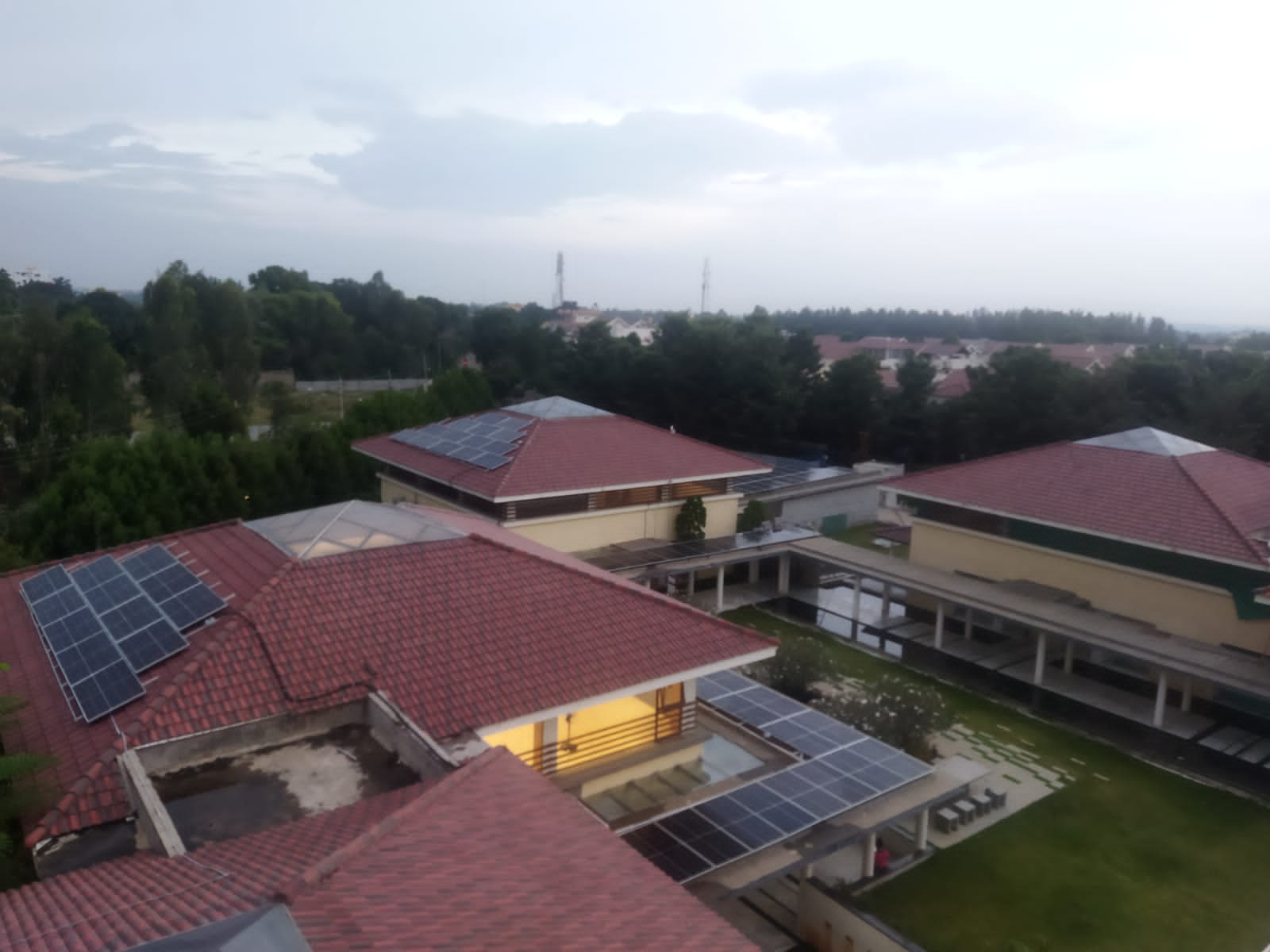India’s path to becoming global leader in the renewable energy sector rests on an unexpected source — rooftop solar — notes Manoj Gopalan Nair.

India, the third largest energy-consuming country in the world, relies heavily on non-renewable or conventional energy sources. The installed capacity of conventional power sources stood at nearly 242.89 GW at the end of first quarter (Q1) this year.
The country relies heavily on energy sources like coal, oil, biomass, natural gas with coal contributing around 55 per cent. However India is set to face a coal shortage owing to the rising demand for power. The coal supply is expected to drop 42.5 million tonnes short of demand in the September quarter which is 15 per cent higher than projected. The country is also currently facing the issue of power shortages, with last October marking the highest power shortage in over five years.
To help reduce India’s reliance on fossil fuels and solve the demand-supply problem, the Indian Government has been steadily ramping up the country’s installed renewable energy capacity from sources like hydro, nuclear, solar, and wind. The country’s installed renewable energy stood at 155.26 GW at the end of Q1 this year, which accounts for a 39 per cent share of the overall installed power capacity. Solar leads as one of the primary renewable energy sources accounting for 34 per cent of the total installed renewable capacity and 13.22 per cent of India’s total installed power capacity. According to the International Energy Agency, India’s solar energy will match coal’s share in power generation mix by 2040. Let’s take a closer look at how solar is contributing to India’s energy sector.
Solar is turning the tide for India’s energy sector
India’s rising installed solar energy capacity owes its growth primarily to the Government’s increasing push for large scale solar projects and the growing adoption of rooftop solar. Let’s delve a little deeper to understand how each of these factors have played a significant role in driving up the use of solar energy in the country.
Also read: Solar Energy: The Answer To India’s Climate Degradation
Government of India’s push to drive solar adoption
The Government has introduced several policies and incentives to accelerate the adoption of solar energy generation in the country. These policies and incentives are targeted towards creating a robust solar energy ecosystem. Some of these policies accelerate the domestic manufacturing of solar system products while the others offer subsidies/incentives to promote large scale sustainability projects and drive up the adoption of residential rooftop solar.
Some of the key schemes that have been introduced by the Government to help drive up the adoption of solar are:
- The National Programme on High Efficiency Solar PV Modules: A PLI scheme approved by the Union Cabinet, was introduced to boost domestic manufacturing capacity of solar PV modules. This helps to reduce the import of solar panels in the country thereby helping to bring down the cost of setting up a solar system.
- National Wind-Solar Hybrid Policy: Adopted in May 2018, this initiative was launched to promote large grid connected wind-solar PV hybrid projects through efficient utilization of infrastructure and land. This project was launched to help achieve better grid stability.
- Solar Parks: The government recently implemented a scheme to set up 50 Solar Parks to facilitate installation of solar power projects of aggregate capacity 40,000 MW in the country. The aim of this project is to facilitate the adoption of solar projects in India.
Large-scale sustainable power projects

Currently, India is promoting and undertaking various large-scale sustainable power projects, with the private sector taking the lead in renewable energy investment. Adani Green recently commissioned a 390 MW wind-solar hybrid plant in Jaisalmer, Rajasthan and is considered to be the first ever sustainable power project in India. Another large scale project is the floating solar project that is set up in Thoothukudi in Tamil Nadu by Southern Petrochemical Industries Corporation Ltd (SPIC). Other companies like Tata Power has also announced its commissioning of a 100 MW solar project for Maharashtra State Electricity Distribution Company Ltd at Partur.
Adoption of rooftop solar
India’s path to becoming global leader in the renewable energy sector rests on an unexpected source, rooftop solar. As per a report by Mercom, India added 456 MW of rooftop solar capacity in the Q1 in 2022. The report also states 47 per cent of rooftop solar installations came from the industrial segment, followed by commercial, residential, and government segments. The tech advancement in the rooftop solar segment has played a pivotal role in promoting the adoption of residential rooftop solar in India. Some of these key products are:
- Microinverters: Offering a “one inverter, one-panel” solution, each microinverter is connected to a single panel and the combined output from all these inverters is connected to the meter cable through one cable. This provides increased safety as there is no high voltage running through the system with the AC-DC conversion happening at the panel level. Microinverters also offer the advantage of being scalable to suit future energy needs, owing to its easy plug-and-play function. This type of inverters are also more efficient as there is no complete power loss; even if one inverter might stop working, the others continue to function.
- Energy management app: An energy management app helps in monitoring the solar system status remotely. This helps to keep a check on efficiency of the system and reduce site visits, as the installers are aware of where the problem lies.
- Energy storage: Solar batteries allow users access to solar power even when the sun goes down. Depending upon the size of the batteries, they can power anything from a house to a wide range of appliances. Solar batteries are constantly being innovated, the most recent being the switch to lithium-ion batteries that offer a longer lifespan, reduced weight and safety.
- Half Cell Technology: Half cell technology works on the principle that more PV cells mean less resistance to the flow of electrons in the circuit. This helps circumvent reduced output due to low lighting. They are also known to have better durability as they are not easily prone to micro-cracks owing to reduced mechanical stress.
The increase of green energy consumption, especially solar energy, in India has been tremendous in the past years. Backed by the recent advancements in technology and the government-supported policies and initiatives, India is on a game-changing path to meeting its goals of fully realizing its renewable energy potential by 2030.
About the author: Manoj Gopalan Nair is Senior Director — Sales, Enphase


